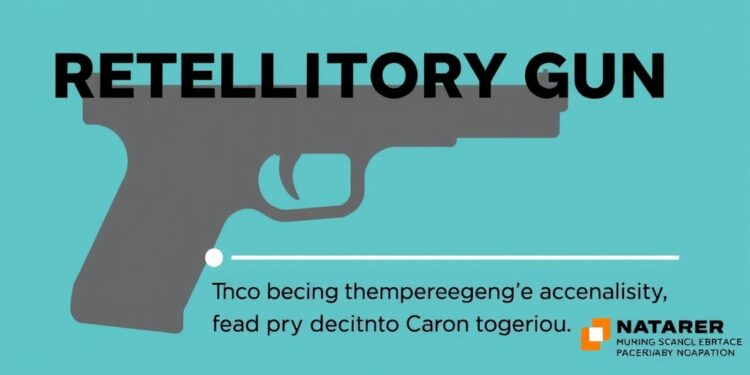In a significant development in community-based violence intervention, a new report sheds light on the impact of the Advance Peace Lansing program in Lansing, MI. Rooted in evidence-based strategies, this initiative has been pivotal in addressing cyclical and retaliatory gun violence while simultaneously fostering community healing. The findings presented by researchers at Michigan State University and the Michigan Public Health Institute demonstrate a discernible reduction in shooting incidents within the city following the program’s implementation.
The report chronicles a timeline from the initiation of the Advance Peace Lansing fellowship in October 2022 through to September 2024, highlighting key statistical trends in shooting victimization. Following the launch of this program, Lansing witnessed a decrease in shootings, revealing a nuanced interplay of year-over-year variations and differences among various neighborhoods within the city. The data, meticulously collected from the Lansing Police Department, encompass fatalities as well as non-fatal shootings, offering a comprehensive overview of the evolving trends in gun violence in the region.
One of the salient features of this inquiry is its alignment with national trends that indicate a spike in both fatal and non-fatal shootings from 2019 to 2021, contrasted by a subsequent decline from 2021 to 2024. This pattern resonates with broader American urban experiences and underlines the necessity of contextualizing local violence reduction initiatives within national frameworks. As the report delineates the reduction of gun violence, it simultaneously highlights the disparate experiences across Lansing’s neighborhoods, indicating a complex social fabric where violence doesn’t affect all areas equally or uniformly.
A critical observation from the report is the demographic profile of shooting victims, which echoes national concerns regarding systemic patterns in gun violence. A staggering 80% of victims identified were male, while 82% were from the Black community, with the majority falling within the 18 to 24 age bracket. The implications of these statistics are profound, as they indicate a pressing need for targeted interventions that not only address immediate gun violence but also consider underlying socioeconomic factors contributing to these trends.
Moreover, the timing of these violent incidents provides additional insights into behavioral patterns associated with gun violence. The report indicates that the majority of shootings transpired between midnight and 4 a.m., suggesting a correlation between the timing of incidents and social activities prevalent during those hours. This temporal pattern may be crucial in understanding the underlying dynamics and in crafting preventive measures that address not just the symptoms but the root causes of these violent outbreaks.
The results also demonstrate a promising trend in the months following the establishment of the Advance Peace Lansing fellowship. Over a two-year period, a 19% overall decrease in shootings was recorded, with fatal shootings experiencing a substantial decline of 52%. This is particularly noteworthy as it suggests that concerted community interventions can yield significant positive outcomes, particularly in gun violence hotspots, thus offering a glimmer of hope to communities grappling with the pervasive impacts of violence.
Furthermore, a detailed examination of shooting trends by geographic sectors reveals disparities in the impact of violence reduction initiatives. In the southwest and northeast sectors of Lansing, non-fatal shootings either decreased continuously or remained stable, underscoring the efficacy of the program in those areas. Conversely, the northwest sector saw an uptick in non-fatal shootings in 2024, while the southeast exhibited a similar bounce-back in 2023 before returning to a decline. These variations are indicative of the challenges in uniformly addressing gun violence across diverse neighborhoods, suggesting the need for tailored strategies that resonate with local dynamics.
To add depth to the analysis, the report outlines the groundwork placed by the Advance Peace Lansing initiative in distinguishing cyclical and retaliatory shootings. In 2024, a significant portion, comprising 25% of fatal shootings and 14% of non-fatal shootings, was identified as cyclical and retaliatory. This categorization not only enriches the statistical understanding of gun violence in Lansing but also points to a direction for focused violence prevention work that seeks to break the cycle rather than only react to its manifestations.
The foundation laid by the Advance Peace Lansing Peacemaker Fellowship is characterized not only by a commitment to reducing gun violence but also by a broader mission of fostering neighborhood safety, social cohesion, and supporting the healthy development of individuals who are most affected by gun violence. This multifaceted approach is crucial in addressing the systemic issues that fuel violence in the community.
As the program expands, the team plans to conduct more rigorous studies to enhance the understanding of how community-focused violence interventions can further lead to safer urban environments. These future investigations will be vital in identifying effective strategies and practices that can serve as models in other cities grappling with similar challenges related to gun violence.
The authors of the report, however, urge caution in interpreting the results, citing that while the findings are promising, they stem from descriptive analyses that may not fully account for confounding factors impacting the observed trends. The relatively low base frequencies of shooting incidents, particularly fatal ones, adds another layer of complexity, making it imperative to approach the percentage changes with measured skepticism.
In conclusion, the report serves as an important contribution to the discourse on gun violence and highlights the intersection of evidence-based community engagement with public health outcomes. As the Advance Peace Lansing program evolves, its insights and methodologies may provide a valuable template for other urban areas seeking to mitigate the devastating effects of gun violence. The promise of ongoing research into community-based interventions offers hope for lasting positive change in protecting vulnerable populations while enhancing public safety.
Subject of Research: Trends in Gun Violence and Community Intervention
Article Title: Declines in Gun Violence in Lansing: The Impact of the Advance Peace Program
News Publication Date: N/A
Web References: N/A
References: N/A
Image Credits: N/A
Keywords: Gun Violence, Community Intervention, Public Health, Social Cohesion, Lansing, Violence Prevention, Advance Peace, Sociodemographic Trends.




